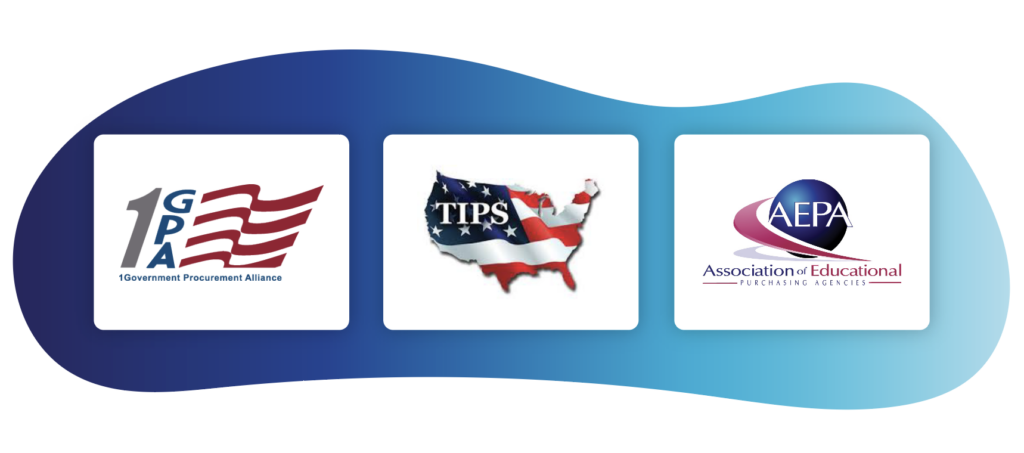Key takeaways you will find in this article
- •Requests for proposals (RFPs) are critical in the facilities management software purchasing process
- •An RFP must include specific core elements to be clear, aligned, and effective and allow for objective applicant evaluation
- •Evaluation criteria are also important for applicants to understand what technical aspects the institution requires regarding software functionality, cost, support, and integration capabilities
- •Purchasing co-ops can save time and money for organizations in the RFP process
Table of contents
- What role do requests for proposals (RFP) play in facilities management?
- Key elements in the facilities management software RFP process
- Technical specifications to include
- Best practices for crafting an effective RFP
- How to document the RFP process
- Why consider using a purchasing co-op
- Integrating FMX solutions for facilities management software
Requests for proposals, typically called RFPs, are vital in facilities management across various industries. Organizations like schools, churches, healthcare, manufacturing plants, and municipalities routinely complete RFPs.
RFPs clarify expectations and scope of projects that require facilities maintenance software. An effective RFP also streamlines how organizations can objectively evaluate the quality of applicants and find the right candidate.
In today’s facilities management world, computerized maintenance management systems (CMMS) offer robust solutions to simplify operations, like work orders, and save time and other resources for institutions. Finding the right CMMS is critical to digitizing and streamlining your facilities management processes.
What role do requests for proposals (RFP) play in facilities management?
An RFP is a formal document that outlines an institution’s requirements and expectations for facilities management. Prospective vendors, including CMMS software companies, can then apply for the contract.
This document serves as a blueprint for the procurement process that supports institution and interested service providers.
Organizations across industries typically have extensive facilities management needs, such as:
- Building and grounds maintenance
- Work requests
- Safety and security
- Technology infrastructure
- Energy efficiency
- Accessibility
- Compliance with local, state, and federal laws
Facilities management software helps streamline operations, but finding the right one can be a challenge. An effective RFP is pivotal in the selection process and helps ensure the organization chooses a dependable and high-caliber vendor.
This precision in contractor selection also supports applicants because the RFP clearly indicates whether the institution is a client they want to work with and whether their services cover all the demands and expectations outlined in the RFP.
Facilities management CMMS is not a one-size-fits-all solution. Even when contractors know that they can fulfill all requirements, a detailed RFP allows them to craft their proposal in a way that highlights the most relevant capabilities of their facilities management software.
Key elements in the facilities management software RFP process
An RFP must include specific core elements to be clear, aligned, and effective and allow for objective applicant evaluation. Understanding each element and role can help you craft a comprehensive RFP that streamlines the search and selection process as you consider facilities management software options.
The anatomy of a typical RFP includes:
- Executive summary
- Scope of work
- Technical specifications
- Evaluation criteria
- Timelines and milestones
The opening section – or executive summary – provides an overview of the organization’s objectives, needs, and expected outcomes from the upcoming proposals. This high-level section helps vendors get a first look at whether they want to dig deeper into the RFP and submit a proposal, or whether it’s not a right fit for them.
The next section, the scope of work, outlines the specific tasks, deliverables, and other responsibilities the institutions expect from a contractor. In facilities management, this can involve maintenance scheduling, inventory tracking, work order processes, and compliance with the necessary laws and regulations.
Technical specifications to include
The section on technical specifications should include details about the organization like:
- Building and other asset lists
- Number of employees and locations
- Relevant infrastructure details
- Systems and software compatibility
- Security protocols
Evaluation criteria are also important for applicants to understand what technical aspects the institution requires regarding software functionality, cost, support, and integration capabilities. This keeps the procurement process, facilities application, evaluation, and communication transparent.
Finally, outlining timelines and milestones keeps the stakeholders responsible for selecting a vendor on track once they have received proposals. You also want to include whether you accept physical or digital submissions so applicants know how to send their proposal.
Clear timelines also ensure that vendors understand their time window if they want to:
- Ask questions about the RFP,
- Submit a proposal for consideration,
- Know when your institution makes a decision.
An effective RFP has two objectives: attracting proposals from vendors that can fulfill the organization’s needs and expectations and ensuring communication and transparency happen throughout the procurement process.
Best practices for crafting an effective RFP
To take the anatomy of an effective RFP to the next level, having a deep understanding of industry-standard best practices can help your organization avoid pitfalls or only look at immediate to short-term goals.
With how facilities management involves different stakeholders, collaborating with the different teams in your institution who are engaged in operations can help craft a more accurate RFP that addresses all organizational needs.
In addition to precise and clear requirements throughout the request for proposals, you can provide sample data or scenarios to help vendors understand your institution’s specific requirements and expectations. This can help applicants tailor their proposals to the RFP more effectively.
Manage your entire facility from a single interface
Streamline day-to-day management processes into a simple and reliable system your whole team will love.
When crafting your evaluation criteria, defining a weighted scoring system based on each element’s importance can simplify the evaluation process and help maintain objectivity. In addition to objectivity, a weighted scoring system can save you time when processing applications thanks to its standardization.
Two other things to consider are scalability and future readiness. Although it may be easy to focus on your organization’s requirements right now, ensuring that proposals have the flexibility to adapt to your future operational needs can make a powerful difference and help build a sustainable relationship with your contractor.
Also, consider allowing room for innovative solutions. Although you want to ensure that a vendor meets all your requirements, keeping your mind open to new and out-of-the-box solutions can benefit your institution. You might pair and integrate other solutions with your software.
How to document the RFP process
Following specific steps helps you create an RFP for facilities management software or CMMS that addresses all essential elements and best practices.
Simple and effective steps to follow to craft your RFP include:
- Defining clear objectives and scope that identify your organizational needs and current challenges,
- Compiling relevant stakeholders’ requirements and feedback and necessary documents to align the RFP with both organizational and business goals,
- Structuring the RFP document so it is clear and concise without overlooking any crucial details.
When you include the proposal guidelines in your RFP, make sure that your instructions include the evaluation criteria. Also add timelines and any required documentation or vendor experience that applicants need to provide. You also want to have contact information for the point of contact at your institution for inquiries and submissions related to the RFP.
A tried and tested way to streamline RFP creation is to design a template. This simplifies stakeholders’ communication and information entry, saving your institution time. Although it may take time to create the template at first, it will positively impact your upcoming RFPs and help keep the process consistent over time.
Reviewing your RFP template regularly is vital to ensure it meets all your organization’s requirements and goals.
Why consider using a purchasing co-op
Purchasing co-ops are alternatives to traditional RFPs and can simplify the process for institutions. A purchasing cooperative is a collective buying entity that aggregates multiple organizations to negotiate favorable contracts.
A purchasing co-op streamlines the procurement process. This is due to contract pre-negotiation and careful pre-selection of high-quality suppliers. By joining a purchasing co-op, an institution can choose from a pool of trusted contractors. And pre-approved contracts to meet their facilities management software needs.
Benefits of a purchasing co-op
By bypassing the need for individual RFPs, purchasing co-ops can save time and money for organizations. They also offer them simpler access to reliable and innovative solutions, which can be especially powerful when looking for a CMMS.
Purchasing co-ops benefits educational institutions and trustworthy suppliers.

For example, FMX partners with three purchasing co-ops:
- 1GPA for public schools, private schools, cities, counties, state entities, colleges, universities, and Native American communities.
- TIPS-USA for K-12 schools, charter schools, private schools, Special Education districts, colleges, universities, cities, counties, state agencies, federal agencies, emergency service districts, park & water districts, Native American tribes, transportation authorities, churches, hospitals, nursing homes, member associations, and charitable associations.
- AEPA for K-12, higher education, municipalities, non-profit, and other organizations.
Being pre-approved as an excellent vendor that can help organizations stay on top of their facilities management software needs is a helpful credential for suppliers. In turn, becoming a purchasing co-op member helps institutions easily find and access trusted contractors.
Integrating FMX solutions for facilities management software
FMX provides software solutions for work orders and other facilities management operations with dependable, scalable, and customizable technology. From implementation guidance to lifetime support as an FMX customer, we simplify operations and increase efficiency and open communication between stakeholders.
At FMX, our solutions account for your organization’s unique facilities management software needs to increase efficiency. This is why our core services include maintenance management, inventory management, invoicing, and IT management.
To further tailor facilities management to help you achieve your organization’s goals, we also have add-ons available to optimize your experience. This way, you can take your operations to the next level and embrace both organizational and business excellence.
To learn more about FMX’s facilities management software and its capabilities, we invite you to book a demo today.
Written by
Dana Grove
Manager, Brand and Content at FMX
